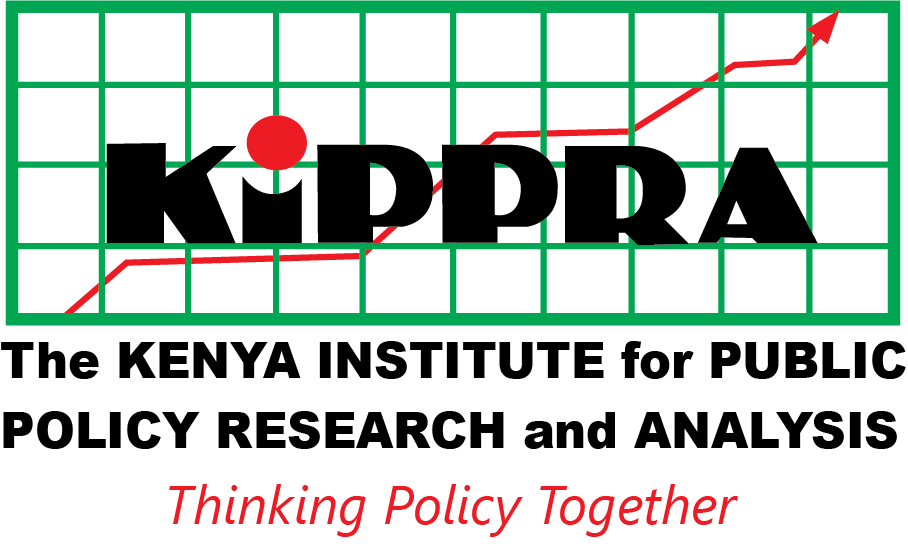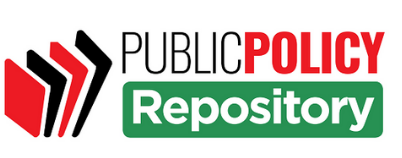Slide 1 of 7 

Slide 2 of 7 

Slide 3 of 7 

Slide 4 of 7 

Slide 5 of 7 

Slide 6 of 7 

Slide 7 of 7 

KIPRRA Public Policy Repository (PPR)
The PPR provides its stakeholders with a One Stop Shop for National and County Government policy documents. The goal of the repository is to strengthen the research-to-policy linkage, through availing to both internal and external customers, an open access platform for all the national policies organized by sectors for ease of retrieval.
Explore Collections
Recently Added
Bomet County Fiscal Strategy Paper 2025
(County Government of Bomet, 2025) County Government of Bomet
The County Fiscal Strategy Paper lays down the foundation for the preparation of the budget and medium term expenditure framework in accordance with Section 117 of the Public Finance Management Act 2012. The document sets out the County Governments economic policies and key priority programs to be implemented in the upcoming financial year budget and Medium-Term Expenditure Framework (MTEF) in line with the County Integrated Development Plan 2023-2027.
This strategy paper offers mechanisms for achieving sustainable growth and development through efficient service delivery in Bomet County.
The County priorities and goals outlined herein are based on the County Integrated Development Plan (CIDP), Governor’s manifesto and the County Annual Development Plan for Financial year 2025/2026. The expenditure priorities in the Sector ceilings in this Fiscal Strategy Paper have been aligned to the Budget Policy Statement, specifically the strategic interventions articulated in the Bottom-up Economic Transformation Agenda (BETA) and anchored on the Fourth Medium Term Plan of the vision 2030.
Measures will be put in place to ensure prudent expenditure and revenue management to improve the county government’s fiscal position. The County Government will adopt new measures aimed at improving own source revenue collection. This includes implementation of the Revenue Enhancement Strategy, adoption of new revenue system, improving technical capacity of staff in Revenue Department and development of revenue bills and policies which are aimed at strengthening local revenue performance. The new administrative measures already in place and policy strategies set to be implemented are expected to create a significant positive impact on own source revenue collection. The County Treasury, therefore, will identify various streams of revenue that are meant to tap resources in achieving the target. The measures being put in place will zeal potential loopholes on revenue leakages.
Baringo County Fiscal Strategy Paper 2025
(County Government of Baringo, 2025) County Government of Baringo
The 2025 County Fiscal Strategy Paper (CFSP) is formulated in alignment with the national development agenda as outlined in the 2025 Budget Policy Statement (BPS). This CFSP, the third to be prepared under the County Integrated Development Plan (CIDP), reflects the county’s commitment to advancing the National and County frameworks including governors manifesto, Bottom-Up Economic Transformation Agenda (BETA); Fourth Medium-Term Plan of Vision 2030 and the County integrated development Plan CIDP) among others. The CFSP serves as a strategic framework to guide resource allocation and implementation of priority programs aimed at fostering economic resilience and inclusive growth within the county.
The main sources of county revenue, in the medium term, will be the equitable share, conditional grants, local revenue collections and donor funding. In the FY 2024/2024 and the medium term, the County Government proposes a series of measures to increase revenue and balance its fiscal spending. The County will focus on broadening the capital base through increased revenue streams with a view to stimulate economic growth and development. This paper, therefore, puts into perspective how the County anticipates expending its scarce resources in the FY 2024/2025 and the medium term.
The preparation of the 2025 CFSP occurs against a backdrop of stable global and domestic economic projections. Global growth is expected to stabilize at 3.2 percent in 2024 and 3.3 percent in 2025, while Kenya’s economic growth is projected to recover to 5.3 percent in 2025, supported by enhanced agricultural productivity, a resilient services sector, and ongoing implementation of BETA priorities. At the county level, the focus will be on implementing strategic interventions that spur local economic growth, improve service delivery, and promote sustainable development
Given the constrained fiscal environment, resource allocation in the 2025/26 budget and the medium-term framework will be driven by prioritization of high-impact programs while eliminating non-essential expenditures. County departments and agencies will be required to reevaluate ongoing and planned projects to ensure alignment with the county’s development priorities. Emphasis will be placed on the completion and operationalization of stalled or near-complete projects to maximize value for money and enhance service delivery.
Baringo County Annual Development Plan 2025/2026
(County Government of Baringo, 2025) County Government of Baringo
The County Annual Develoment Plan (CADP) 2025/2026 has been prepared as per the requirements of Section 126 of the Public Finance Management Act 2012 and in accordance with Article 220(2) of the Constitution and the Economic Planning Circular No. 1/2024 provided by the National Treasury. This CADP is the third policy document to be implemented under the Third Generation (CIDP) covering 2023-2027 period.
The preparation process of this CADP adopts Programme Based Budgeting (PBB) approach, where the sector working groups in the County formulates respective sector budget proposals, policies and programmes with clear outputs, outcomes as well as performance indicators which are related to the achievement of the programme objectives. The prioritized development policies, programmes and projects contained in this CADP will majorly be financed through the National Government equitable share fund, County Government own source revenue, and support from development partners.
In preparing this CADP, reference was made to key National and County Government Policy documents that included the Kenya Vision 2030, the SDG’s, the Bottom-up Economic Transformation Agenda (BETA), Governor’s manifesto, the Medium-Term Plans, the County Integrated Development Plan (CIDP) and the Programme Based Budget (PBB) for FY 2024/2025. Special focus in this CADP has been given to completion & Operationalization, Improvement of revenue access infrastructure, primary health care, climate change mitigation measures among others.

